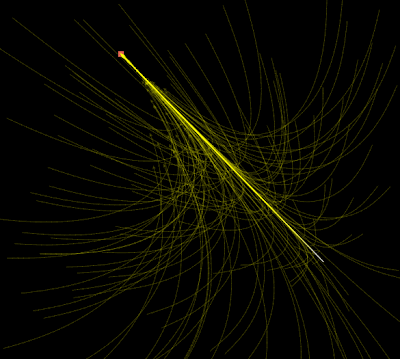
I had an interesting discussion with my colleague Gregory today. I was telling him about my network-work, and told him that I was trying to find something about language to pull off. Since his wife is a Dutch language professor and Gregory has been digging deeply into that language, I thought he might have some insights.
He began to tell a tale about reflexive verbs in the Dutch language, and some recent research that has been returned. Apparently, the Dutch language originally had no reflexive verbs (verbs where the subject and direct object are the same, like "I shave myself"). When it appeared, it swept through the country. Originally, it was thought this was due to the publication of the Dutch Bible, and the Dutch people's desire to speak with the patois of the rich.
According to Prof. Jolanda Vanderwal Taylor (Dutch Language, University of Wisconsin - Madison), a recent dissertation by Jennifer Boyce-Hendriks determined that the introduction of reflexive verb was the introduction of German refugees from the south; they brought the concept of reflexivity with them. The Dutch people, for whatever reason, found it an attractive addition to the language, and it rapidly spread. This is backed up by journals, letters and legal documents that are stored in the official archives.
Since this was a pre-media society, the spread had to occur through contact (face-to-face, people hearing the reflexive verb spoken) rather than through mediated means, and thus would have spread like a "wave" rather than a flash.
I constructed a basic wave-like movement over a population space, then recorded Gregory using both a passive and reflexive phrase in Dutch. These two phrases are cross-faded as the wave washes over the population, eventually leading to only a reflexive voice remaining. I'm going to record a part of an interview tomorrow, and hope to include that with the sonification to create a cool audio piece that combines interview, disembodied Dutch phrases and perhaps some drone based coincident generators. This one turned out cool.
Done in Max only because the sound capabilities of NetLogo were horrible, and I wanted the visuals that couldn't come out of something like Nodal.
[ddg]
Edits: Some additional material added. The reference dissertation is "Immigration and linguistic change: A socio-historical linguistic study of the effect of German and southern Dutch immigration on the development of the northern Dutch vernacular in 16th/17th century Holland" by Jennifer Boyce-Hendriks.

